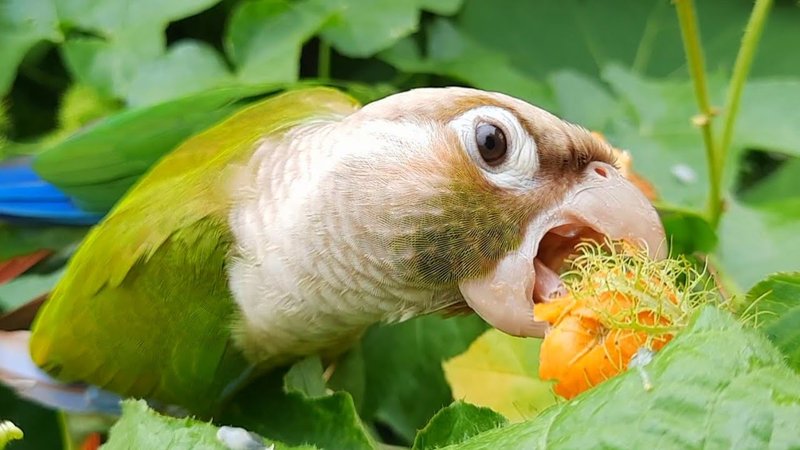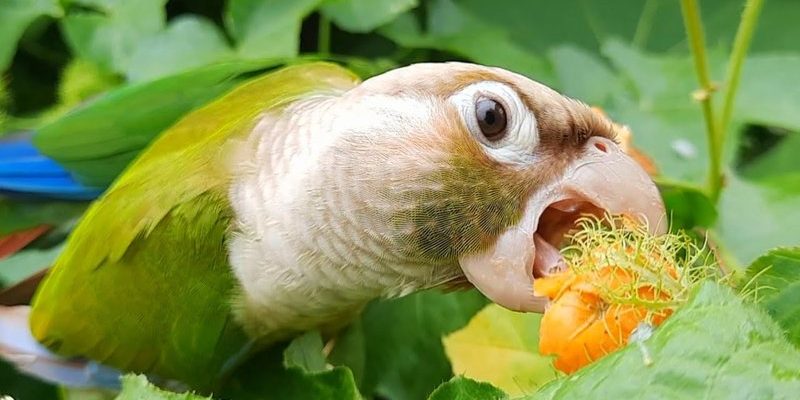
Imagine you’re settling in with a warm cup of coffee, ready to dive into the world of conures. You might be wondering why some birds thrive in the wild while others struggle in captivity. Well, let me explain! Conures have unique traits that help them survive and flourish, whether they are in a bustling forest or a cozy home. These adaptations not only showcase their resilience but also highlight the importance of proper care when they become part of our families.
Physical Adaptations
Conures are equipped with physical features that are perfectly suited for their natural habitats. These adaptations are crucial for their survival. For instance, their beaks are strong and curved, allowing them to crack open seeds and nuts with ease. This is particularly significant since their diet consists largely of hard-coated fruits and seeds found in their environment.
In addition to their beaks, conures have zygodactyl feet, which means they have two toes pointing forward and two backward. This unique foot structure helps them grip branches and climb effectively. You can picture a conure clinging to a tree trunk, navigating its way up with the agility of a little acrobat. This physical trait gives them an edge as they search for food and build nests high above ground, safe from predators.
Coloration also plays a role in how conures adapt. The bright feathers of conures help them blend into the vibrant flora of their environment. This camouflage can protect them from potential threats. It’s a bit like wearing a camouflage jacket when you’re hiking in the woods—helpful for staying hidden. Their colors not only serve practical purposes but also help in social bonding with other conures.
Dietary Flexibility
One of the standout features of conures is their ability to adapt their diets based on what’s available. In the wild, they feast on fruits, nuts, seeds, and even flowers. This dietary flexibility is a significant adaptation, allowing them to thrive in varying environments, from dense forests to cultivated areas.
You might find it interesting that conures can sometimes eat things you wouldn’t expect them to munch on. They are known to sample insects or even small snails when other food sources become scarce. Think of it like a potluck dinner; they take what they can get to enjoy a balanced meal. This ability to switch up their diet is crucial, especially during dry seasons when certain fruits might not be available.
For those of us who care for conures at home, understanding their dietary needs is essential. It’s important to offer a wide variety of foods, including fresh veggies and pellets designed for parrots. Just as a diverse diet helps them adapt in the wild, it keeps our feathered friends healthy and happy in our care.
Social Behavior and Communication
Conures are also social creatures, and their behaviors reflect this social nature. In the wild, they often live in flocks, which helps them adapt to their surroundings more effectively. Being part of a group allows them to work together when foraging, increasing their chances of finding food. It’s like having a group of friends to help you spot the best deals during a shopping spree!
Communication is another key factor in their social interactions. Conures use a variety of sounds to convey messages, such as warning others of danger or calling for companionship. Their vocalizations can be loud and cheerful, but that’s just part of their charm! Being effective communicators helps them maintain strong social bonds and ensures they are aware of their surroundings.
In captivity, conures require social interaction with their human caregivers, too. They thrive on companionship, so it’s crucial to spend time with them, whether it’s engaging in play or simply talking to them. This social connection mimics the flocking behavior they would experience in the wild and promotes their overall happiness.
Habitat Choice and Nesting
Where a conure decides to live can greatly impact how well it adapts to its environment. In the wild, conures often choose nesting sites in tree hollows or shrubbery, which provide safety from predators and direct access to food sources. This choice of habitat allows them to create a loving home for their young without the constant threat of danger.
Nesting behavior is another fascinating aspect. Conures will often line their nests with leaves and other plant materials, creating a comfortable and safe space for their eggs. This careful selection of nesting materials is vital for the survival of their chicks. Just like we want a cozy, safe place to rest after a long day, baby conures need the same comfort and safety.
For conure owners, understanding how to mimic a suitable habitat is essential if you have one as a pet. Providing a spacious cage with plenty of perches, toys, and places to hide can create an enriching environment. It’s about giving them the happiest home possible, one that echoes the safety and autonomy they would find in their natural habitat.
Behavioral Adaptations to Challenges
In the wild, conures face various challenges, from finding food to avoiding predators. Their behavioral adaptations are crucial for overcoming these obstacles. For instance, conures are known to be quite intelligent. They can solve problems and use tools to help them reach food or navigate tricky situations. This ability to think critically is like having a toolbox to fix problems as they arise.
Moreover, conures display a significant amount of resilience. If faced with adversity, they often adjust their behaviors rather than succumb to stress. For example, if food becomes scarce, they might expand their foraging routes or change their foraging tactics. Instead of simply giving up, they find ways to adapt, showcasing their determination to thrive.
As pet owners, we can help our conures develop these skills by providing them with puzzles, toys, and activities that stimulate their minds. Just as we enjoy a good mental workout, our feathered friends need those challenges to grow and thrive. This not only keeps them entertained but also encourages healthy behaviors and boosts their confidence.
Emotional Resilience and Bonding
You might be surprised to learn that conures are quite emotionally intelligent. They bond deeply with their caregivers, and this emotional connection is pivotal for their well-being. In the wild, social bonds help them feel secure and supported, which is an adaptation for their mental health.
When a conure forms a strong bond with a human, it can lead to increased confidence and reduced stress for the bird. This emotional resilience can be likened to having a best friend who stands by your side through thick and thin. Just as those friendships boost our spirits, a loving environment can help our conures flourish.
To foster this bond, it’s important to spend quality time with them, recognizing their unique personalities. Engaging in play, offering treats, or simply sitting together can strengthen that emotional connection. This practice not only makes them feel secure but also enhances their overall adaptability, making them happier and healthier companions.
Ultimately, understanding how conures adapt to their environment gives us a deeper insight into their fascinating lives. From their physical traits and dietary flexibility to their social behaviors and emotional resilience, every aspect of their existence speaks to their ability to thrive. Whether they’re soaring through the treetops or settling in as a beloved pet, conures show us the beauty of adaptability.
As we learn to care for these vibrant birds, it’s crucial to provide them with an environment that reflects their natural instincts and behaviors. By honoring their needs and quirks, we can nurture a thriving bond that enriches both our lives and theirs. So, the next time you see a conure, take a moment to appreciate the incredible ways they adapt and flourish in a world that demands so much of them.

